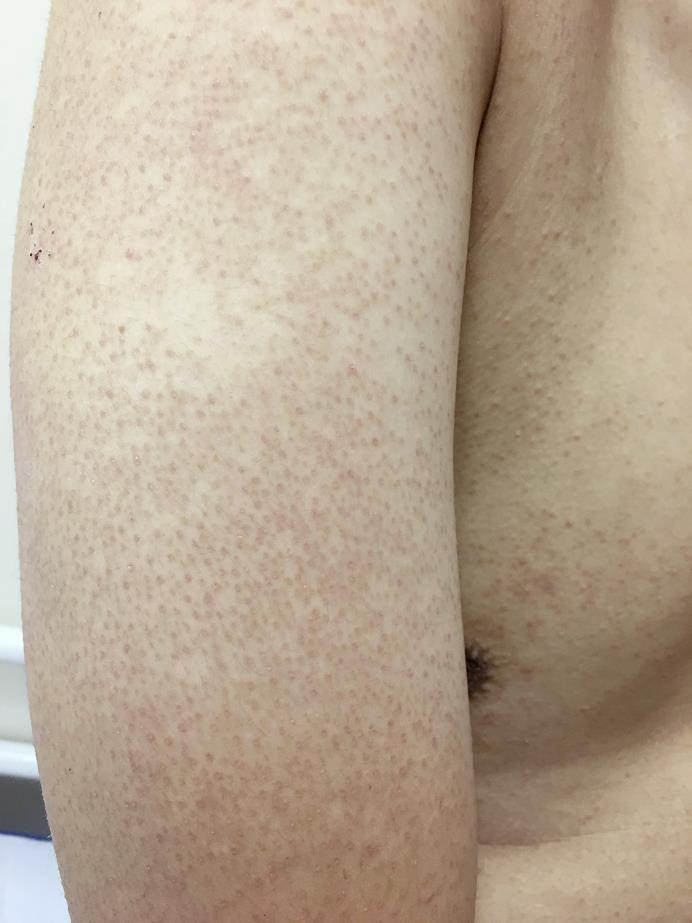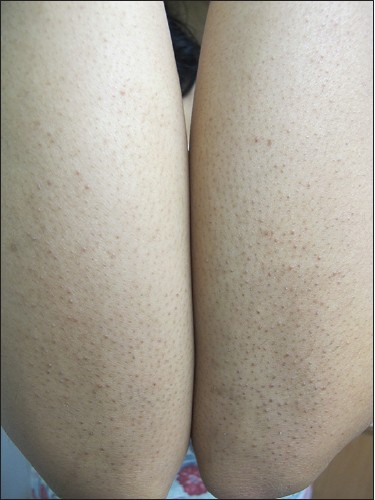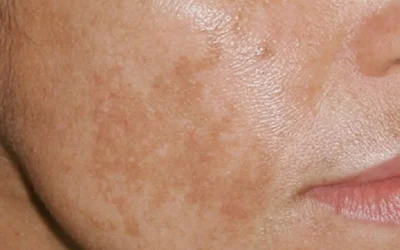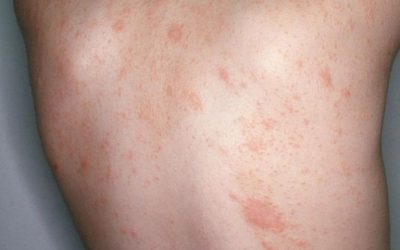Keratosis Pilaris – goosebumps

Keratosis pilaris usually occurs in children and young adults (up to 20% of children, 50-70% of adolescents and about 40% of adults). Although the exact cause of the disease is not known, it is often associated with atopic dermatitis, ichthyosis.
Diagnosed based on the clinical picture, small, flesh-colored or pink, hard papules are usually observed on the extensor surfaces of the limbs: upper arms, thighs, less frequently observed in other areas of the body.


- Emollients (moisturizing creams) and keratolytics. Preparations containing milk acid, salicylic acid, urea, helps to soften and smooth keratotic papules.
- Topical retinoids. Can be used as a secondary treatment without the help of emollients and keratolytics.
- Topical corticosteroids. In case of pronounced inflammation, they can be used for 1-2 weeks.
- Third-line treatment may include systemic retinoids, laser therapy, and ablation procedures.
Daily washing in a lukewarm shower using mild, soap-free skin cleansers is recommended. No longer than 3 minutes after washing, apply moisturizing cream to the skin (choose the cream according to the description given in the treatment section). Wear looser clothing without causing additional skin irritation. It is important to maintain adequate humidity (50-60%) at home, and special air humidifiers can help with this. If you do not know which method of treatment is the most suitable for you, consult a dermatovenerologist.

Vitiligo – Why Do White Patches Appear on the Skin and How to Treat Them?
Vitiligo is a non-contagious skin condition characterized by white patches due to the loss of pigment. While it does not pose a direct threat to physical health, it can have a significant psychological impact. Learn what causes vitiligo, its symptoms, how it is diagnosed, and which treatment methods are currently available.
Hyperpigmentation: Causes, Types, and Modern Treatment Options
Hyperpigmentation is a common skin condition characterized by dark spots that appear due to sun exposure, hormonal changes, or skin damage. In this article, you will learn about the main types and causes of hyperpigmentation, as well as how to effectively treat it using modern dermatological methods and preventive care.
Pityriasis rosea
An acute, self-limiting, exanthematic skin disease that manifests as itchy, somewhat inflammatory, scaly rashes, usually on the torso, chest, and upper limbs.
iDerma
MB iDerma
Fabijoniškių g. 99, Vilnius
+370 671 33323
info@iderma.lt



